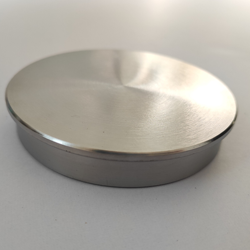Recently, many friends asked about the characteristics of molybdenum sputtering targets. In the electronic industry, in order to improve the sputtering efficiency and ensure the quality of deposited films, what are the requirements for the characteristics of molybdenum sputtering targets? Now the technical experts from RSM will explain it to us.
1. Purity
High purity is a basic characteristic requirement of molybdenum sputtering target. The higher the purity of molybdenum target, the better the performance of sputtered film. Generally, the purity of molybdenum sputtering target should be at least 99.95% (mass fraction, the same below). However, with the continuous improvement of the size of the glass substrate in the LCD industry, the length of the wiring is required to be extended and the linewidth is required to be thinner. In order to ensure the uniformity of the film and the quality of the wiring, the purity of the molybdenum sputtering target is also required to be increased accordingly. Therefore, according to the size of the sputtered glass substrate and the use environment, the purity of molybdenum sputtering target is required to be 99.99% – 99.999% or even higher.
Molybdenum sputtering target is used as cathode source in sputtering. Impurities in solid and oxygen and water vapor in pores are the main pollution sources of deposited films. In addition, in the electronic industry, because alkali metal ions (Na, K) are easy to become mobile ions in the insulation layer, the performance of the original device is reduced; Elements such as uranium (U) and titanium (TI) will be released α X-ray, resulting in soft breakdown of devices; Iron and nickel ions will cause interface leakage and increase of oxygen elements. Therefore, in the preparation process of molybdenum sputtering target, these impurity elements need to be strictly controlled to minimize their content in the target.
2. Grain size and size distribution
Generally, the molybdenum sputtering target is polycrystalline structure, and the grain size can range from micron to millimeter. The experimental results show that the sputtering rate of fine grain target is faster than that of coarse grain target; For the target with small grain size difference, the thickness distribution of the deposited film is also more uniform.
3. Crystal orientation
Because the target atoms are easy to be preferentially sputtered along the direction of the closest arrangement of atoms in the hexagonal direction during sputtering, in order to achieve the highest sputtering rate, the sputtering rate is often increased by changing the crystal structure of the target. The crystal direction of the target also has a great influence on the thickness uniformity of the sputtered film. Therefore, it is very important to obtain a certain crystal oriented target structure for the sputtering process of the film.
4. Densification
In the process of sputtering coating, when the sputtering target with low density is bombarded, the gas existing in the internal pores of the target is suddenly released, resulting in the splashing of large-size target particles or particles, or the film material is bombarded by secondary electrons after film formation, resulting in particle splashing. The appearance of these particles will reduce the quality of the film. In order to reduce the pores in the target solid and improve the film performance, the sputtering target is generally required to have a high density. For the molybdenum sputtering target, its relative density should be more than 98%.
5. Binding of target and chassis
Generally, the molybdenum sputtering target must be connected with the oxygen free copper (or aluminum and other materials) chassis before sputtering, so that the thermal conductivity of the target and chassis is good during the sputtering process. After binding, ultrasonic inspection must be carried out to ensure that the non bonding area of the two is less than 2%, so as to meet the requirements of high-power sputtering without falling off.
Post time: Jul-19-2022






